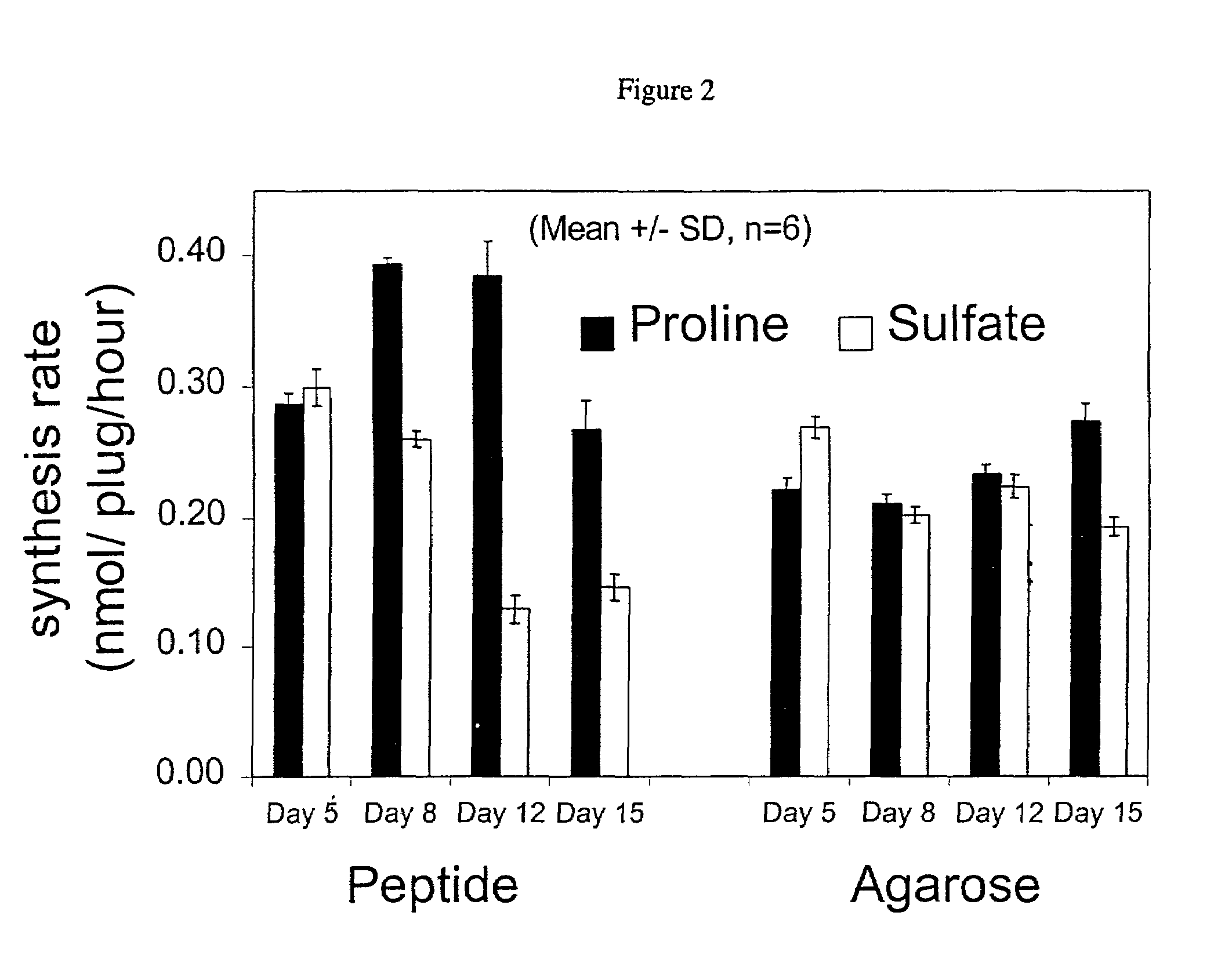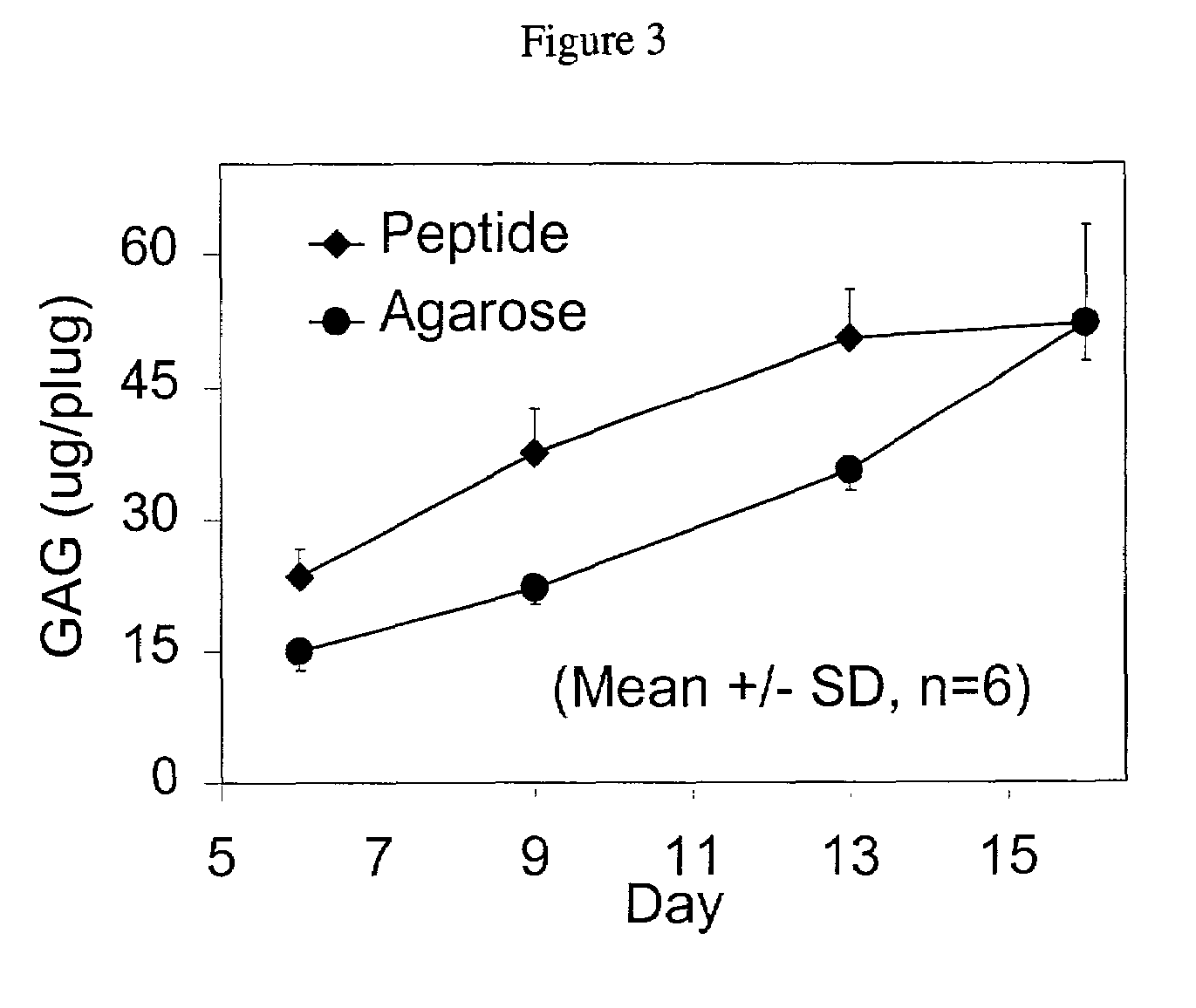Macroscopic scaffold containing amphiphilic peptides encapsulating cells
a technology of amphiphilic peptides and macrophages, which is applied in the direction of peptides, non-embryonic pluripotent stem cells, prosthesis, etc., can solve the problems of immune incompatibility and improper distribution of stress on biomaterials, and concerns about contamination by infectious agents, so as to improve the ability of the scaffold to repair or replace endogenous cartilage. , the effect of increasing the stiffness of the scaffold
- Summary
- Abstract
- Description
- Claims
- Application Information
AI Technical Summary
Benefits of technology
Problems solved by technology
Method used
Image
Examples
Embodiment Construction
[0033]To maintain their phenotype, chondrocytes are typically cultured in a three-dimensional environment. Within such an arrangement, chrondrocytes develop a mechanically functional extracellular matrix and respond appropriately to static and dynamic compressive loads. We have discovered that a peptide scaffold that encapsulates living cells in a three-dimensional arrangement may be formed by first mixing the cells and the peptides in a solution having the required osmolarity to maintain cell viability, and then adding sufficient electrolytes to initiate self-assembly of the scaffold. Long-term cultures showed that the chondrocytes encapsulated by this scaffold deposited a continuous matrix, maintained a rounded morphology, and had a significant rate of protein and proteoglycan synthesis. These results indicate that a peptide gel scaffold encapsulating chondrocytes may be used to repair or replace cartilage tissue.
[0034]Secretion of extracellular matrix components by the encapsulat...
PUM
| Property | Measurement | Unit |
|---|---|---|
| Fraction | aaaaa | aaaaa |
| Frequency | aaaaa | aaaaa |
| Amphiphilic | aaaaa | aaaaa |
Abstract
Description
Claims
Application Information
 Login to View More
Login to View More - R&D
- Intellectual Property
- Life Sciences
- Materials
- Tech Scout
- Unparalleled Data Quality
- Higher Quality Content
- 60% Fewer Hallucinations
Browse by: Latest US Patents, China's latest patents, Technical Efficacy Thesaurus, Application Domain, Technology Topic, Popular Technical Reports.
© 2025 PatSnap. All rights reserved.Legal|Privacy policy|Modern Slavery Act Transparency Statement|Sitemap|About US| Contact US: help@patsnap.com



